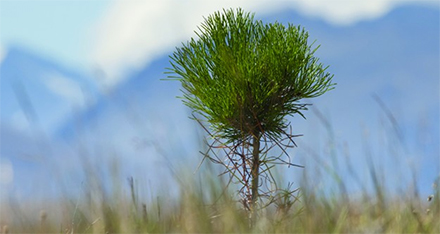A new proposal to manage carbon farming could see future permanent plantings of exotic forests like radiata pine excluded from the Emissions Trading Scheme (ETS). New Zealand Forestry Minister Stuart Nash and Climate Change Minister James Shaw have released a public discussion document that seeks feedback on ideas to better manage afforestation. Source: Timberbiz
“Climate change is a challenge we cannot postpone. The government wants to encourage afforestation to help meet our climate change targets, offset carbon emissions, and also help farmers, landowners and investors diversify their income streams,” said Stuart Nash.
“We want to balance the risks created by new permanent exotic forests which are not intended for harvest. We have a window to build safeguards into the system, prior to a new ETS framework coming into force on 1 January 2023.
“From 2023, under current rules, a new permanent forest category of the ETS would allow both exotic and indigenous forests to be registered in the ETS and earn New Zealand Units (NZU). We are now proposing to exclude exotic species from the permanent forest category.
“We want to encourage the right tree, in the right place, for the right reason. We intend to balance the need for afforestation with wider needs of local communities, regional economies, and the environment.
“Increased plantings of exotic forests are being driven by rising carbon prices as landowners and investors seek higher returns. The NZU price has more than doubled over the past year, from around $35 in late 2020 to over $80 in February 2022.
“Permanent exotic forests like radiata pine have potential environmental and ecological risks. These include pests, fire, damaged habitats for native species, biodiversity threats, and a relatively short lifespan compared to well-managed mixed indigenous forests.
“Later this year, we will also consult on proposals which could give local councils more powers to decide under the Resource Management Act where exotic forests are planted in their areas,” said Mr Nash.
Climate Change Minister James Shaw said planting more trees can help us meet climate goals, but it is important to make sure all types of afforestation are well-managed through the ETS and the planning process.
“Aotearoa was once blanketed with native forests, home to indigenous birds, insects and other wildlife. Today much of those ancient forests are gone, but what remains is still a vital carbon sink,” he said
“In its advice to Government, the Climate Change Commission said we need to increase both indigenous and exotic tree planting to meet our emissions targets. But they also warned we need to reduce our overall reliance on forestry offsets, and better manage the impacts of afforestation.
“For example, a proliferation of permanent exotic forestry could result in lower long-term carbon prices and potentially limit investment in low-carbon technologies. At the same time, an increase in native forestry will require additional management efforts to eliminate pests that feed on native trees.
“This consultation is an opportunity for anyone with an interest in the future of forestry to have their say. We particularly want to hear from Māori landowners. Iwi-Māori have significant interests in permanent forestry, and we want ensure they are not unfairly impacted.
“The decisions we take now will be felt decades into the future, so it’s really important we get this right.”
Public submissions can be made from 14 March. The consultation runs till 22 April 2022.
To find out more or make a submission visit:
https://www.mpi.govt.nz/consultations/managing-exotic-afforestation-incentives





